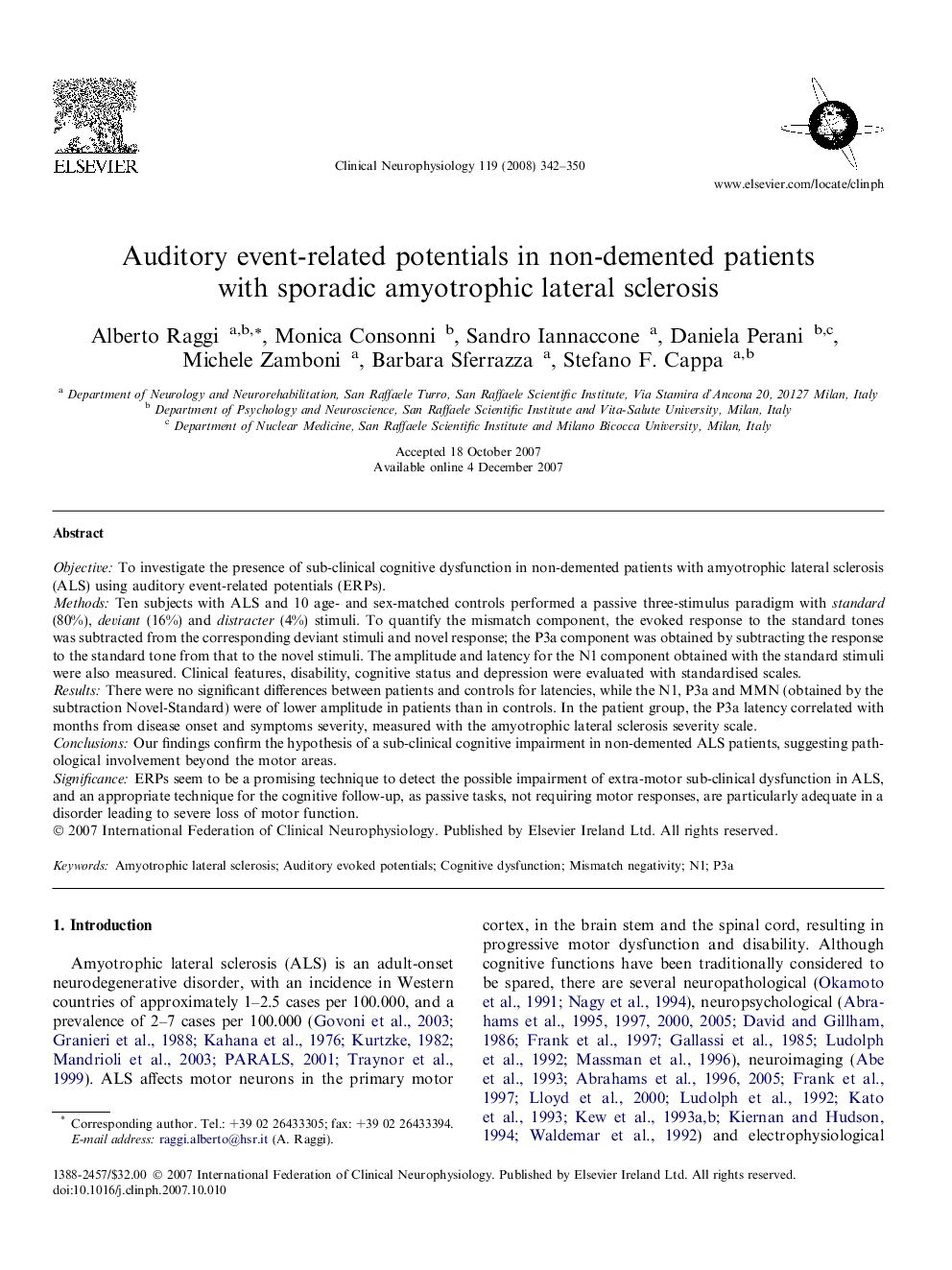| Article ID | Journal | Published Year | Pages | File Type |
|---|---|---|---|---|
| 3047874 | Clinical Neurophysiology | 2008 | 9 Pages |
ObjectiveTo investigate the presence of sub-clinical cognitive dysfunction in non-demented patients with amyotrophic lateral sclerosis (ALS) using auditory event-related potentials (ERPs).MethodsTen subjects with ALS and 10 age- and sex-matched controls performed a passive three-stimulus paradigm with standard (80%), deviant (16%) and distracter (4%) stimuli. To quantify the mismatch component, the evoked response to the standard tones was subtracted from the corresponding deviant stimuli and novel response; the P3a component was obtained by subtracting the response to the standard tone from that to the novel stimuli. The amplitude and latency for the N1 component obtained with the standard stimuli were also measured. Clinical features, disability, cognitive status and depression were evaluated with standardised scales.ResultsThere were no significant differences between patients and controls for latencies, while the N1, P3a and MMN (obtained by the subtraction Novel-Standard) were of lower amplitude in patients than in controls. In the patient group, the P3a latency correlated with months from disease onset and symptoms severity, measured with the amyotrophic lateral sclerosis severity scale.ConclusionsOur findings confirm the hypothesis of a sub-clinical cognitive impairment in non-demented ALS patients, suggesting pathological involvement beyond the motor areas.SignificanceERPs seem to be a promising technique to detect the possible impairment of extra-motor sub-clinical dysfunction in ALS, and an appropriate technique for the cognitive follow-up, as passive tasks, not requiring motor responses, are particularly adequate in a disorder leading to severe loss of motor function.
